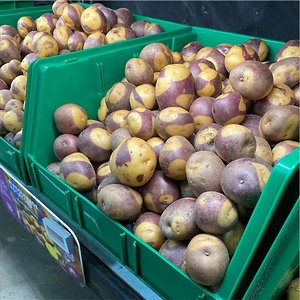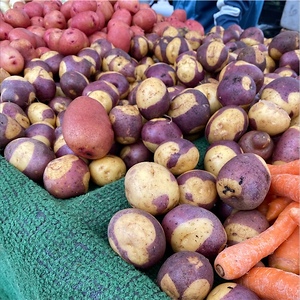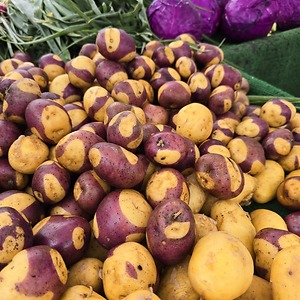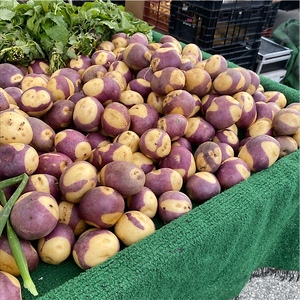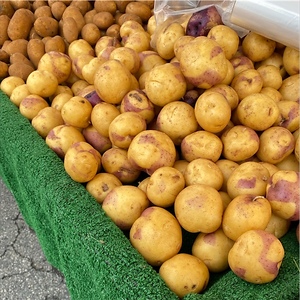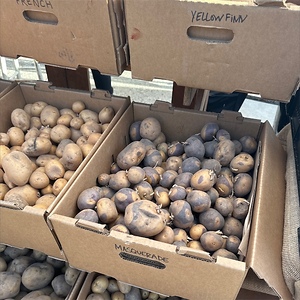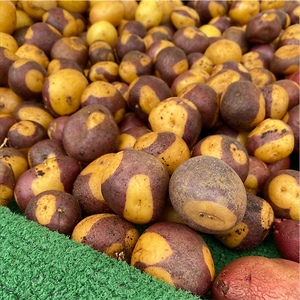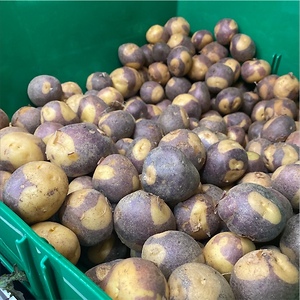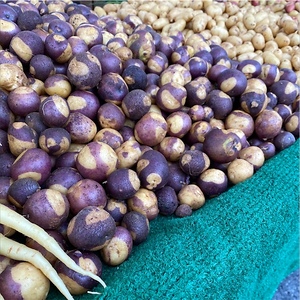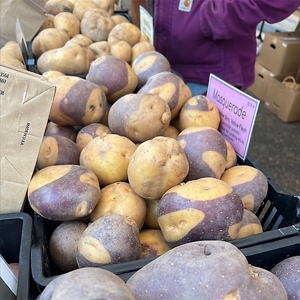


Masquerade Potatoes
Estimated Inventory, lb : 0
This item was last sold on : 07/26/24
Description/Taste
Masquerade potatoes are small to medium in size and are oval to oblong in shape, roughly 6-7 centimeters in diameter. The bicolored, thin skin has a golden yellow base and is covered in dominant spots of purple and violet. There are also many small, dark brown spots speckling the skin with a few, shallow eyes. The flesh is pale yellow to light gold and is firm, dense, and moist. When cooked, Masquerade potatoes offer a creamy and buttery flavor.
Seasons/Availability
Masquerade potatoes are available in the winter.
Current Facts
Masquerade potatoes, botanically classified as Solanum tuberosum, are the natural result of crossing two older varieties that are believed to be the inka gold and A91846-5R. These potatoes resemble a small yukon gold wearing a purple mask, hence the name, Masquerade. They are also known as the Pinto potato and the Zebra Striped potato and are a mid-season variety that was created for use in diverse culinary preparations and unique visual appeal.
Nutritional Value
Masquerade potatoes are a good source of vitamin C, potassium, and antioxidants.
Applications
Masquerade potatoes are best suited for cooked applications such as roasting, baking, boiling, mashing, steaming, frying, or sautéing. To maintain the stunning effect of their unique coloration, keep them whole with the skin on and simply bake with a drizzle of oil and salt. Masquerade potatoes are also excellent boiled and put into soups, stews, fried into hash browns, or baked and served alongside roasted vegetables. Masquerade potatoes will keep for a couple of weeks when stored in a cool, dry, and dark place.
Ethnic/Cultural Info
Masquerade potatoes have a Plant Variety Protection pending. Currently, they are only available for purchase on seed websites for home garden use, and growers must purchase the rights to grow this variety.
Geography/History
Masquerade potatoes were first developed by the potato breeding program at Colorado State University’s San Luis Research Center. These potatoes are the natural result of breeding two older varieties, believed to be inka gold and A91846-5R, and were not genetically modified. When yellow and purple skinned potatoes were first introduced to the market around 2010, Weiser Family Farms of Bakersfield, California were among the first in their cultivation. Today this variety can be found on seed websites for home garden use and in specialty grocers and farmers markets.
Recipe Ideas
Recipes that include Masquerade Potatoes. One
| Treat Belly |
|
Acorn Squash Puree & Potato - Leek Soup |



